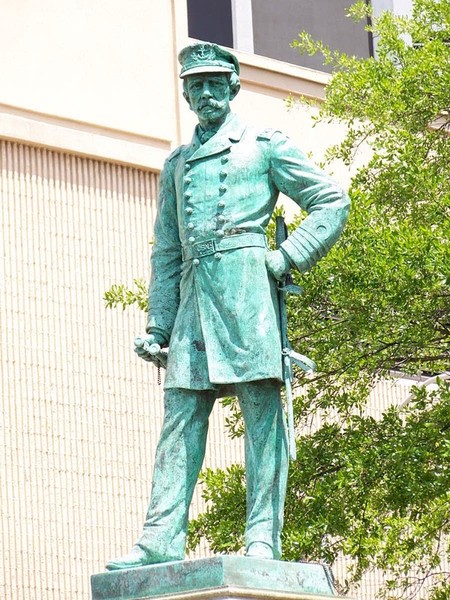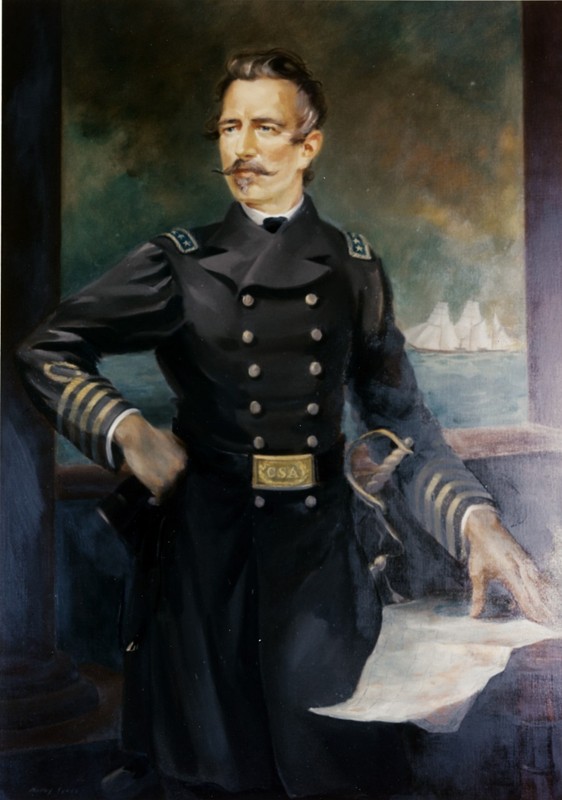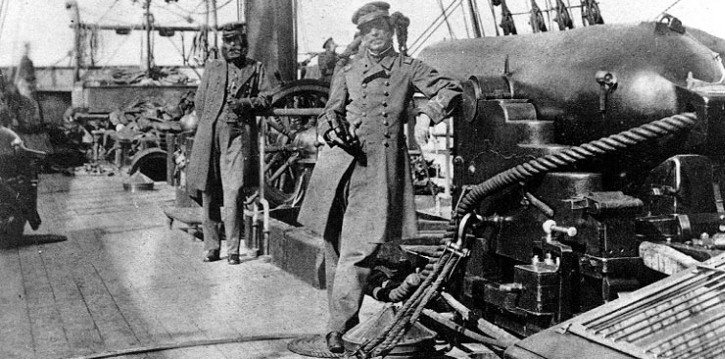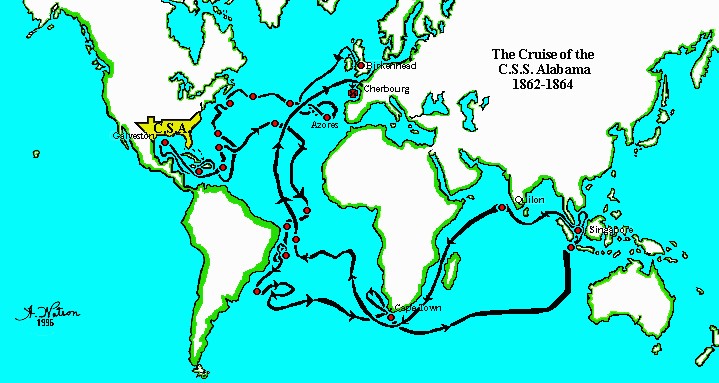Statue of Admiral Raphael Semmes (1900-2020)
Introduction
Text-to-speech Audio
From its dedication in 1900 to its removal in 2020, the statue of Raphael Semmes that was located here has been a representation of how historical interpretations change over time. Semmes was a long-serving naval officer who joined the Confederacy during the Civil War and was later imprisoned for treason. The monument was erected in 1900 by people who hoped to frame the historical narrative in favor of those who fought for the Confederacy and against the United States. The statue was removed in 2020, a time when communities were reconsidering the propriety of Confederate monuments. The monument can now be found in the nearby History Museum of Mobile, along with interpretive signage. Semmes was born on September 27, 1809, and soon became an orphaned child raised by his uncle Raphael Semmes. His other uncle, Benedict Semmes, helped the young man get into the Navy, where he served with distinction from 1826 to 1861. When the Civil War began, Semmes joined many other Southern officers who resigned their commissions to join the Confederate Navy. After the war, Semmes was one of only a few Confederate officers who were imprisoned for treason. Among white Alabamans, Raphael Semmes was considered a war hero during the late 19th and early 20th century, and that is why a statue was erected in his honor in 1900. The statue was taken down on June 5, 2020, as part of a larger movement calling for the removal of Confederate statues.
Images
Statue of Raphael Semmes

Portrait of Raphael Semmes in Confederate Navy uniform. Portrait is done by Maliby Sykes

Raphael Semmes is pictured in the middle. Posed on board of the raider CSS Alabama.

The CSS Alabama and the path Raphael Semmes had took.

Backstory and Context
Text-to-speech Audio
Raphael Semmes joined the U.S. Navy in 1826 and fought in the war with Mexico and other conflicts, but was best known as a Confederate naval officer. The events from 2018-2020 saw greater sensitivity to the monumental landscape of American cities, leading to decisions to remove some Confederate monuments, especially those in prominent locations within communities where tourism is a significant economic driver. Slightly over two hundred statues were removed in 2020, with the majority being linked to the Confederacy and many others being related to the histories of Indigenous people.
Raphael Semmes was the son of Richard and Catherine Middleton Semmes, and was orphaned at a young age and raised by his uncle Raphael Semmes. His other uncle, Benedict Semmes, helped young Semmes secure his spot as a midshipman in the U.S. Navy in 1826. Semmes had several family members in the military, including Confederate General Paul Jones and Union Navy Captain Alexander Alderman Semmes.
While Semmes was in the Navy, he also studied law and passed the Maryland bar in 1834. He also practiced law in Cincinnati, Ohio, in 1837 while serving in the Navy. Raphael Semmes was promoted multiple times, from being appointed Midshipman in 1826 to commanding the USS Somers during the war with Mexico. Semmes was promoted to commander in 1855 for the U.S. Navy. When Alabama seceded, Semmes joined, followed, and was appointed a commander of the Confederate Navy. While a Confederate officer, Semmes was sent to New Orleans to convert a steamer into the cruiser CSS Sumter. In June 1861, he ran the ship through a blockade surrounding New Orleans and led raids where he captured eighteen merchant vessels in just six months.
The statue of Raphael Semmes was put up in 1900 to widespread acclaim among white Alabamans. The news of his statue being built was all over the front pages of newspapers and was celebrated after many years of planning and a delay during the Spanish-American war. During the 1930s, the statue had to be moved due to construction. In 2020, the statue was removed overnight under the order of Mayor Sandy Stimpson.
Sources
Specker, Lawrence. “Mobile's Statue: Who Was CSA Adm. Raphael Semmes?” al, June 5, 2020. https://www.al.com/news/mobile/2020/06/mobiles-statue-who-was-confederate-adm-raphael-semmes.html.
“Raphael Semmes.” Encyclopedia of Alabama, September 20, 2007. http://encyclopediaofalabama.org/article/h-1359.
Raphael Semmes.” American Battlefield Trust, October 18, 2018. https://www.battlefields.org/learn/biographies/raphael-semmes.
“Semmes, Raphael.” Naval History and Heritage Command. Accessed September 15, 2020. https://www.history.navy.mil/our-collections/photography/us-people/s/semmes-raphael.html.
Raphael Semmes Statue. (n.d.). Retrieved November 05, 2020, from http://www.encyclopediaofalabama.org/article/m-2614
Raphael Semmes. (2020, September 27). Retrieved November 05, 2020, from https://en.wikipedia.org/wiki/Raphael_Semmes
https://www.scvsemmes.org/stories-of-the-statue-of-the-admiral.html
https://www.history.navy.mil/our-collections/photography/us-people/s/semmes-raphael/nh-45798-kn.html
https://www.historynet.com/confederate-raider-raphael-semmes-catch-me-if-you-can.htm
https://www.scvsemmes.org/voyages-of-the-alabama.html
